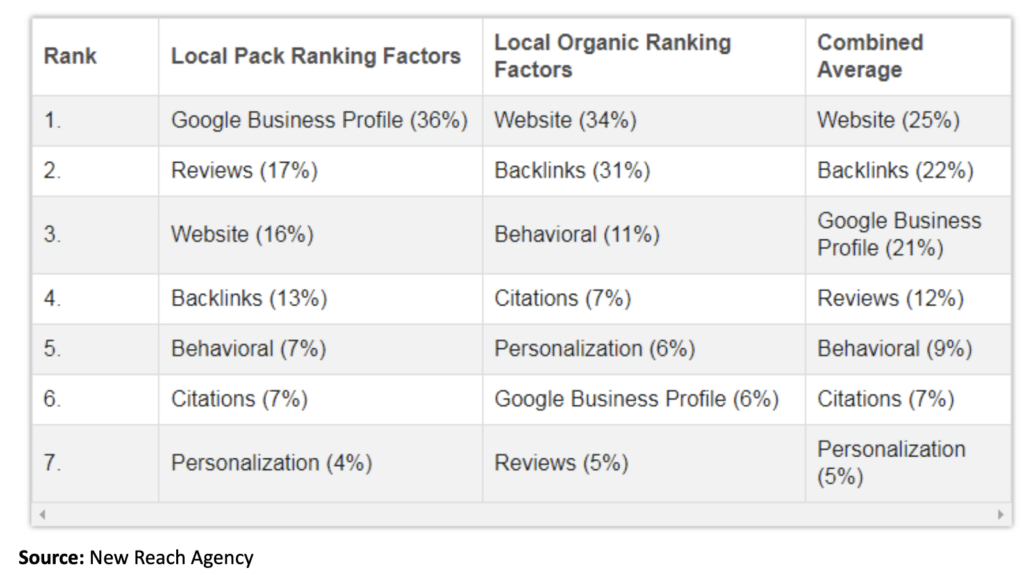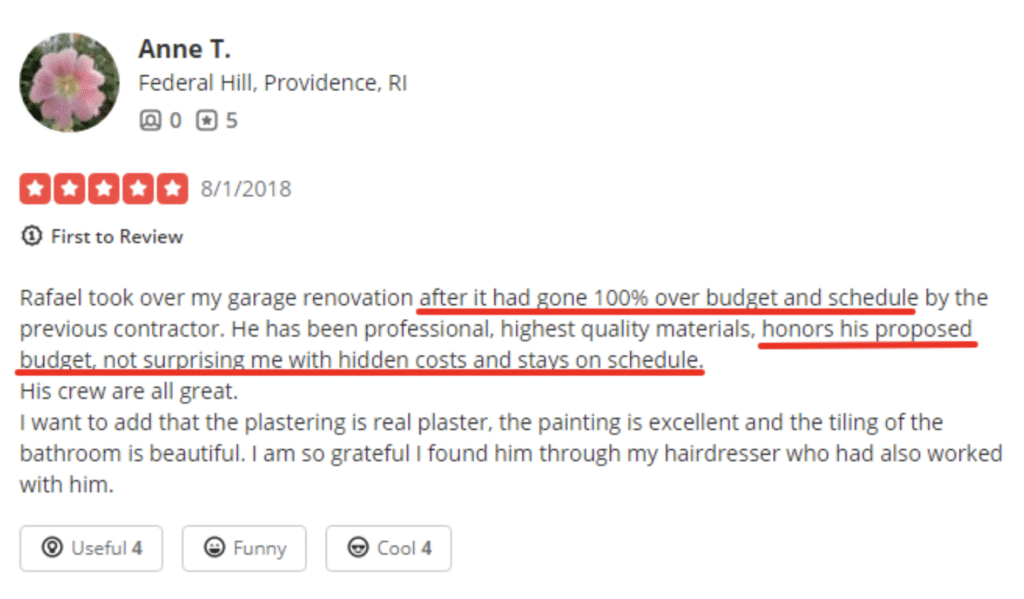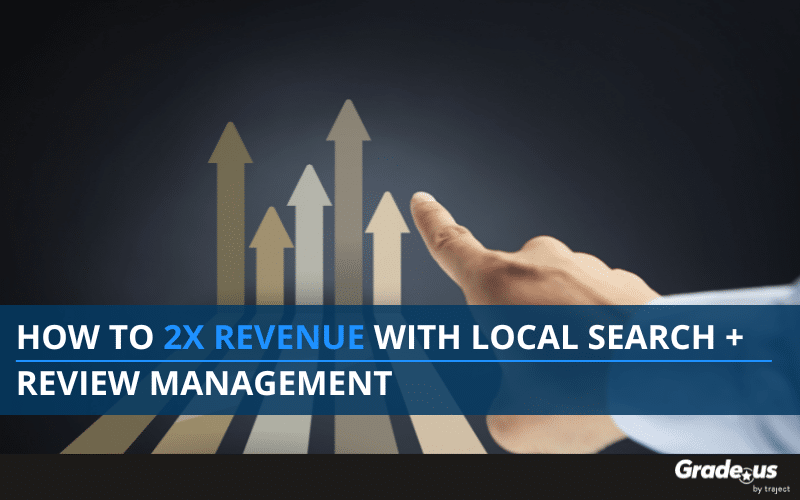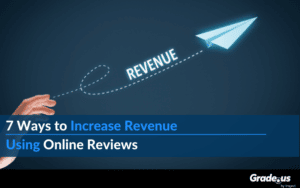It’s what your clients want.
When your clients hire your agency, they’re really looking for two specific things, (a.) more customers and (b.) more revenue.
All your work as an agency boils down to this.
If you can generate consistent traffic, leads, sales, customers, or revenue for your customers, you’ll continue to be in demand. In this current economic climate, I’d argue that demand for your agency would increase steadily over time.
Why local search matters to your clients
As an agency, I realize you’re probably already aware of the value of local search. Day after day, you’re in the trenches, slogging away for your clients. Many of them don’t realize how challenging it is to produce the kind of value you do for them.
The worst part about this? We can’t tell them.
We both know how your clients would respond if you sat them down and had “the talk,” the one where you tell them that their business, product, or service is not where it needs to be.
You do it, but you offer small, bite-sized doses.
It’s not enough.
This is why local search matters. It’s an opportunity to address the problem, using local search as a guide to home in on the specific profit levers that boost revenue.
Your clients want this.
If you can produce this kind of consistent growth for your clients, your agency will continue to thrive, even in a down economy.
What you’ll need to 2x your revenue
In a 2018 post, Ryan Deiss shared his formula for doubling sales. Here’s a brief recap. L x C x M x f = GP
Where…
L = leads
C = customers
M = margin
f = purchase frequency
GP = growth potential
His thesis is simple; “doubling any of the variables above (leads, customers, margin, frequency of purchase) will double your sales.”
This formula tells us what we’ll need.
If you want to:
- 2x leads: You can attack this from several angles – more lead magnets, 10x content that attracts a disproportionate amount of leads, partnerships to generate leads, etc.
- 2x customers: You can (a.) increase advertising or marketing spend, (b.) create more partnerships (e.g., channel, strategic, joint venture, etc.), or (c.) earn more referrals and recommendations from a variety of sources.
- 2x margin: You can increase your prices, decrease your cost-per-lead and expenses, or your average order values via upsells and cross-sells, etc. Another way to increase margin is to increase the revenue flowing through the supply chain. Let’s say you run an aquaponics business and sell vegetables; you can sell your vegetables, the fish you use to fertilize your produce, your water runoff, and even the compost you generate for a profit.
- 2x purchase frequency: Start by addressing your customer’s supplemental problems. For example, if you sell your customer a new car, they may be more interested in the extras you offer (e.g., interior upgrades, extended warranties, gap insurance, etc.). Every product or service creates supplemental problems that customers are willing to spend to fix.
What does this mean?
- If you want more leads, you’ll need stronger incentives and offers. You’ll need more offers delivered to prospects at the right time.
- If you want more customers, you’ll need to be seen by ideal customers in more places. You’ll need stronger incentives and offers and urgency triggers.
- If you want to increase margins, you’ll need strategies and tactics to increase average order values, raise prices, decrease incentives (e.g., discounts, special offers), etc. You’ll also want to squeeze more value out of your products and services.
- If you want to increase purchase frequency, you’ll need to create strong offers combined with systematically increasing your upselling, down-selling, and cross-selling opportunities. You’ll want to find ways to make buying a habit for your customers.
It gets better.
According to Deiss, doing this in one area (i.e., improving leads) will 2x your revenue. Do this across all four areas (pretty difficult to do), and you’ll 16x your revenue.
Using local search + review management to 2x revenue
When it comes to local search, Google is the primary focus. If we want to 2x revenue, we need to look at local search ranking factors. New Reach Agency broke down their local search ranking factors for 2023.
Take a look.

Ah, now we’re getting somewhere.
This tells us which channels should receive our attention. This is great news because we already have our list of ingredients. Now we can find creative ways to plug those into these channels.
Here’s a list of prerequisite tasks you’ll need to complete.
- You’ll need to claim and update your Google My Business (GMB) account
- Your GMB account will need to be optimized to improve user behavioral factors (e.g., click-to-call, click-for-directions)
- You’ll need to increase your citations, ensuring consistency across your profiles (i.e., same name, address, phone number)
- You’re going to need a very strong review portfolio with strong aggregate reviews
- Your website will need to provide a mix of information and education
- Attracting backlinks via internal links, 10x content, partnerships, and influencers
Alright, let’s bring all of this together.
Step #01: Create a list of competitors
Put together a list of closely related competitors. If you’re a small business, you’ll want to target a small business that serves the same segments you do (i.e., small business, ecommerce, sports products). You’re looking for a list of five to ten competitors.
The more relevant they are to your local area, the better.
You’ll want to spend some time trolling through their review portfolios. You’ll want to save the reviews that discuss any of the following topics:
- Desires (met/unmet)
- Goals
- Fears
- Frustrations
- Problems
- Objections
- Risks
It’s a good idea to do this for your business as well. You’ll want to make sure that you’re taking care of your issues first before mentioning anyone else’s failings.
Step #02: Ask your customers for feedback
Notice I didn’t say ask for reviews.
If we’re going to do this right we need feedback. The word “feedback” motivates customers to share their thoughts and feelings with you. When you request feedback, it’s about improving your products and services for them; you’re doing them a favor. When you request a review, you’re asking for a favor.
It just lands a bit differently.
There’s a time and place for both. If you don’t know where to start, you can customize the large number of templates we’ve created for you.
- 122 Review Request Text Templates To Get Google Reviews
- 44 Unique Email Templates for Requesting Online Reviews
- 120 Email Review Request Subject Line Templates
Customize this to create a feedback request that’s right for your business. Once you have your request templates in place, ask for feedback consistently. This needs to be a never-ending habit every customer is trained to expect.
Here’s where things change.
Those negative reviews you gathered from your competitors? You’ll want to use the data you’ve gathered as discussion points for your reviews.
Let’s say your client is a contractor. You see a competitor review that says:
“They went way over budget; then they placed a lien on my house!”
You’ll want to take note of the emotion in the review as well, as these are details you can ask your client’s customers about later. You can ask your customers about this objection in your review request.
“Did we stay within your budget?”
Then you give your customers a chance to flesh out their story. If you’re interviewing them over the phone, give them a chance to talk. If they’re writing this view email, they’ll take care of things for you. This is important because it’s a systematic process you can use to get the kind of reviews you want without coaching your client’s customers.
This is how you end up with reviews like this:

See what I mean?
Step #03: Syndicate your reviews
Next, embed your reviews on your website using tools like Grade.us to make the process automatic. Use these reviews in your client’s advertising and marketing, in-store signage, and promotional materials. Send it out in their broadcast emails, and post it on their Facebook and Instagram profiles.
Promote these reviews indefinitely.
These reviews accomplish several things for your client’s business:
- These reviews defuse and defang customer objections
- They reduce or eliminate the risk your client’s prospects feel
- Create trust, making it easy to build rapport and close the sale
This is an essential step; your clients and Google will rely heavily on the value you convey in your reviews.
Step #04: Prepare your website
If you’re adding these to your website, you’ll want to create a mix of information (about, pricing, features, warranties, etc.), education (why you need this), and sales pages on your site.
Your educational pages include:
- Blog posts
- Lead magnets
- Books
- Apps
- Datasets
- Visuals
- Video
- Podcasts/audio
This education attracts customers to your cause.
Your information pages include:
- Utility pages (about, company, contact)
- FAQs
- Guarantees and warranties
- Knowledge base content
Your sales pages should include:
- Psychological triggers
- The customer’s problem
- Your client’s solution
- An irresistible offer
- Strong urgency triggers (to motivate action)
- The customer’s objections (defused)
- Online reviews (embedded for maximum effect)
- Risk reversals
Take the time to develop an internal linking strategy for your clients, so they can maximize the value they receive from your efforts. It’s a straightforward way to improve performance rapidly over time.
Step #05: Identify local influencers
Next, create a list of 50 – 150 influencer categories in your local community or area. The assumption here is that your client has a local, regional, or national business and a strong presence in their local community.
This is where most people get it wrong.
They reach out to random influencers who aren’t actually influencers. There are many pretenders out there, tens of thousands of people whose only claim to fame is their follower counts. Paying these people for a mention is unlikely to produce the kind of long-lasting value brands want, but they do it.
This is no good.
Here’s how you get it right.
Create a list of tangential sources; these are professionals who serve the same customers your clients serve in a different yet complementary way.
If you’re a Realtor, a tangential source could be:
- Appraisers
- Title companies
- Mortgage bankers
- Underwriters
- Actuaries
- Home inspectors
- Contractors
- Mechanical engineers
- Interior designers
- Governing/certifying bodies for each of the above.
Imagine if you could squeeze insider information from these sources, develop a partnership, or earn a review of your services. Imagine if these groups were eager to link to your business and website. Can you see how this impacts link building?
The potential is significant.
Okay, you’ve done the upfront work we’ve talked about so far. You have an incredible amount of value you can provide (on your client’s behalf) to industry professionals, influencers, and professional reviewers.
Use these ingredients to craft your pitch.
Not sure how to approach these tangential sources? There’s this fear that hits agencies from time to time. This particular client is nothing special; how on earth am I supposed to make them special?
Just use the value formula.
It’s a formula created by Peter Thiel, founder of PayPal. This is the formula that elite, top performers use in every industry:
- Create X dollars of value.
- Capture Y percent of X.
If you’ve taken the time to gather the ingredients I’ve listed above, you have everything you need to get started.
Step #06: Interlace these tactics
You’ll want to interlace the tactics I’ve covered here for maximum benefit. Add your reviews to your advertising and marketing, and embed the best and worst reviews on your website. Create irresistible offers that you share on your website, GMB, and review site profiles. Verify that your citation data is consistent across the board.
Take an omnichannel approach with these tactics.
Help your clients, so they’re positioned and ready to meet their customers where they are. Use the strengths and weaknesses of your client’s competitors to improve their strategy and tactics.
Use local search + review management to 2x revenue
Remember Ryan’s formula for doubling revenue.
L x C x M x f = GP
Where…
L = leads
C = customers
M = margin
f = purchase frequency
GP = growth potential
When your clients hire your agency, they’re really looking for two specific things, (a.) more customers and (b.) more revenue. Pull on any of these four levers, and you’ll find it’s pretty easy to double client revenue. This is why local search matters. It’s an opportunity to address your client’s problem, a chance to give your clients actionable solutions to their problems, using their customer’s own words.
Your clients want this.
Create this kind of consistent value for your clients, and your agency will continue to grow whether the economy is up or down.










